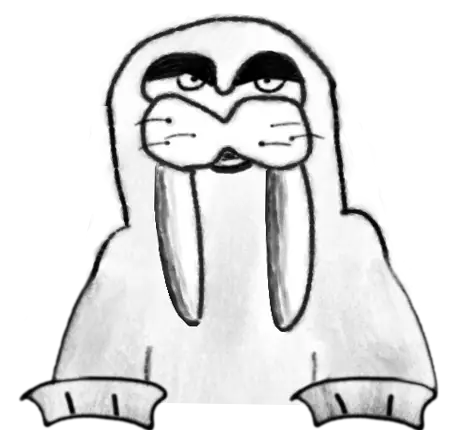May 23, 2022
How to Create Patterns in Literature
Can you imagine a narrative without patterns? A novel where each scene, chapter, or other division is more or less independent from the rest? Well, I wish I could say “me neither”, but I’m afraid I’ve seen such awful novels. Which is precisely why I know they should be avoided at all costs. To create patterns in literature is to create cohesion and symbolic depth, all while favoring non-linear narratives.
Briefly, patterns in literature are creative repetitions that produce meaning precisely as a result of their repetition. We’ll examine this in more detail, with examples, but the key takeaway is this: Patterns in literature are about adding affective impact to your narrative.
So let’s take an in-depth but accessible look at how to create patterns. I’ll first explain what patterns are and what effect they create, then I’ll offer you a practical guide.

What Patterns in Literature Are
First of all, a disclaimer: I dislike the heading. Though I’d argue I’ve earned the right to refer to myself as a literature specialist, I certainly don’t have the prerogative of defining terms in some objective manner. When I refer to what patterns in literature “are”, the phrase “as I see it” should always accompany the statement. I omit it for simplicity’s sake.
With this out of the way, patterns in literature are a kind of repetition. However, there’s a crucial element here. As I mentioned in the introduction, this repetition has to be creative and meaningful, and this meaning must be precisely a result of the repetition.
For example, a narrative with a repetitive vocabulary (e.g. constantly using the word “Nonetheless”) wouldn’t count as a pattern. It would be neither creative, nor meaningful – though take a look at “Patterns of Language”, below, for an important exception.
Here’s an example of a repetition that would be creative but not meaningful: A fantasy fiction novel, set in a context reminiscent of the Middle Ages, using modern-day slang – say, a knight telling his servants “Howdy” every morning. It’s certainly creative, but meaningless – unless it were somehow justified by the plot (say, time-travel was involved). Still, I’d consider it forced.
Instead, let’s take a look at some more elaborate examples that fulfill the three major elements creative repetitions in literature must display. I’ll list them once again for convenience:
- Patterns in literature must be creative.
- They must also be meaningful.
- This meaning must be a result of the repetition itself.
This last point in particular is subtle, so let’s see all this in more detail.
Patterns of Characters
We’ll start with characters, because patterns in literature often materialize through characters. It’s the well-known motif of the double.
Think of Dr. Jekyll and Mr. Hyde in the eponymous novel, Lucy and Mina in Dracula, or indeed… Mulder and Scully in the X-Files. You have two characters that somehow echo each other – either because they are similar or because they are different; this is important to notice. As a result of this echo, the reader pays attention to certain things that assign meaning to the narrative that, otherwise, would be either absent or harder to discern.
If we took Dracula as an example, Lucy is often portrayed as wild, careless, a bit too free for a “proper” Victorian woman, whereas Mina as the epitome of chastity, purity, and ladylike manner. Of course the novel’s outcome – Coppola’s adaptation more explicitly – forces us to question such dichotomies. And we do so precisely because of the two women’s echoing behavior and thought processes.
Therefore, we see that all three requirements are fulfilled: the repetition is creative, it creates meaning, and it’s precisely because of the repetition that there is meaning.
Patterns of Plot
Literary patterns can also develop as a result of the plot itself. This might even be more likely to occur, or perhaps it’s easier to discern.
The typical setup includes a secondary plot that somehow mirrors the primary one, perhaps offering a twist of the theme. The repetition forces the reader to consider something that would otherwise pass unnoticed.
There are plenty of examples of this expression, so I leave it as a little exercise to you to recall a couple. Doing so, remember the key requirements: i) The repetition must be creative and meaningful, and ii) the meaning must be a result of the repetition.
Patterns of Language
Instead, let’s take a look at something a little less usual. It’s also a bit ironic, because it’s likely the easiest to see – at least in terms of spotting the repetition; meaning might be a more complicated aspect of it.
In patterns based on language, the aspect of meaning is effectively outsourced to the reader. Though of course readers always participate in the creation of meaning, here this becomes very lopsided. Readers have to literally create meaning for something that, though obviously meaningful (because of how easy it is to spot), it resists a clear explanation of this meaning.
This is tricky and subtle, but it’s also very powerful. Well worth noticing.
Remember what we said earlier, about repetitions of vocabulary? For example, beginning every other sentence with “Nonetheless” is repetitive but not creatively so.
Though how about if these repetitions were made in a way that actually did have meaning?
A masterful example is Bae Suah’s Untold Night and Day which, according to the description, is a story of “doubles, shadows, and parallel worlds”. Though some of that is a result of what we’d call repetitions of plot and characters, many of the affective reasons must be sought in language.
When Patterns Are Literature
The novel is replete with descriptions that are memorable enough to notice when they echo – a face described as full of smallpox scars, skinny calves, a letter signaling a separation, and a ton of other details (with some delightful metatextual echoes, referring to novels that repeat themselves) create a narrative that is like an echo chamber of one’s imagination. It’s, quite literally, dream-like.
These repetitions are creative – for reasons that evade definitions and even description; quite simply, one has to read the novel to properly appreciate them. They are also meaningful – relying on the general context of the novel, as a story of “doubles, shadows, and parallel words”. And it’s precisely their repetition that renders them so (otherwise, there’s absolutely nothing special about them).
In a way, patterns are the story.
For another example of patterns in literature using language – and now I’m again blowing my own trumpet – I could also refer to the beginning chapter of The Perfect Gray. Feel free to read it and notice the repetitions. What do they mean for Hecate, the protagonist?

Creating Patterns in Literature: a Practical Guide
In more practical terms, what can you do to ensure your narrative displays patterns? Or perhaps, first of all, we should ask: Is there a reason why a novel should not have any patterns?
I must admit, I find it difficult to imagine that a novel would have few or no patterns. The nature of our experiences is such that patterns are what we rely on for meaning. You’d have to try – really hard – to create a novel without patterns. And it’d be something very experimental.
And so, it’s more a question of, How do we create intelligent patterns in literature?
A Brief Checklist
As always, this will depend on a variety of things – from genre to your authorial style and the peculiarities of your particular plot. But the list below could be a good start:
- Identify the concepts of your narrative. Everything in your story revolves around them, and patterns are no exception.
- What kind of repetitions would be suitable for your work? Characters? Plot? Language? To an extent the answer is “all of the above”, but certain kinds of works favor certain patterns more. Gothic and psychological thriller novels will likely favor characters and plot, whereas literary fiction and experimental fiction will favor language.
- Remember the requirements: Repetitions should be creative, meaningful, and meaningful because of the repetition. The good news is, these usually go together. If you manage to be creative and come up with a genuinely interesting repetition, chances are, it will also be meaningful as a result of its mere existence. Perhaps it’s a character looking at a mirror and having certain discussions with themselves. Perhaps it’s a mundane object becoming defamiliarized in different ways. Or maybe it’s a certain peculiar word or phrase.
Literature is More than the Sum of Its Parts
In the end, we have to remember something powerful about art and literature: It’s more than a sum of its parts. It is quite literally about things that aren’t in the story – think about that for a moment.
As a writer, you create a set of dynamics that forces the reader to re-member (as in, re-imagine; re-create) an experience that might or might not be unique to them – solely as a result of reading your work. This is powerful stuff.
I don't show you ads or newsletter pop-ups; everything is offered for free. Wanna help support a human internet?
